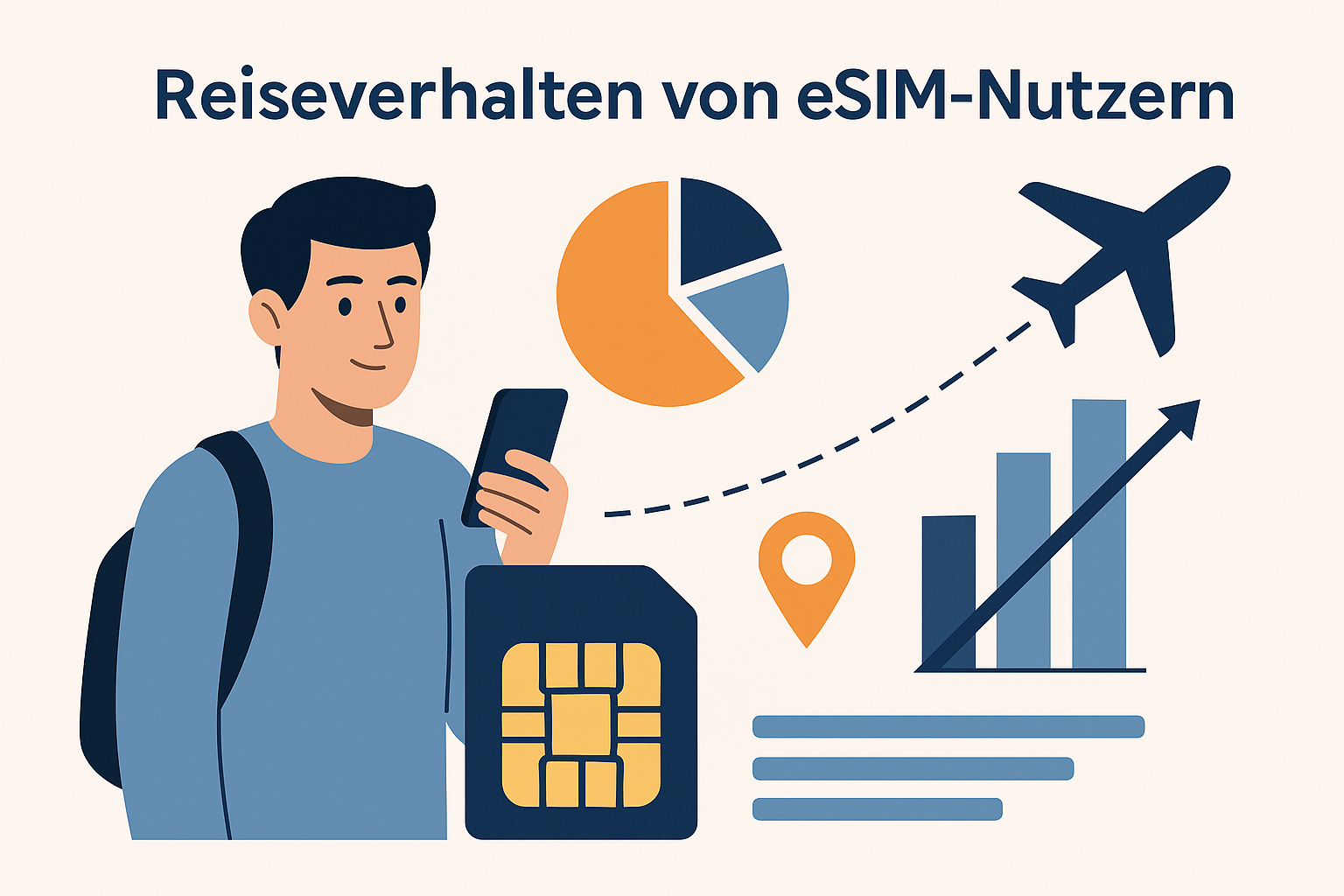Background and Aim of the Investigation
A representative survey was conducted among 23,796 travelers who voluntarily and anonymously participated in a so-called Purchase Post Survey (PPS) following the completion of an eSIM purchase. The objective of this survey was to analyze the buying behavior, travel habits, and tariff preferences of eSIM users. The results provide, for the first time, detailed empirical insights into the usage patterns of a rapidly growing eSIM customer segment.
eSIMs in the 2024 Market Environment
The findings can be contextualized within the broader mobile communications market. By the end of 2024, approximately 13 percent of International mobile phone users actively used an eSIM, while an additional 7 percent had previously tried the technology. This indicates that eSIMs are becoming an increasingly relevant segment within both the International and international mobile communications markets.
Short-Term Purchase Decisions
The data show that short-term decision-making predominates among eSIM buyers. Approximately 78 percent of respondents purchased their eSIM within the last three days before departure, including almost 58 percent on the day of travel itself. Only a small proportion made their purchase more than two weeks in advance. This pattern underscores the importance of immediate availability, seamless activation, and clearly structured user interfaces for eSIM service providers.
Travel Duration and Usage Profiles
The reported travel durations also reveal distinct behavioral patterns. More than half of the respondents undertook trips lasting between seven and fourteen days, corresponding to typical vacation periods. About six percent reported stays of 30 days or longer, suggesting the presence of a growing group of long-term travelers and digital nomads. These findings indicate that eSIM providers should offer both standard short-term packages and extendable or rechargeable long-term solutions to meet the needs of different traveler segments.
Tariff Preferences and Customer Expectations
In terms of tariff preferences, the results reveal a clear tendency toward fixed-volume data packages: around 65 percent of participants preferred a defined data allowance, while roughly 35 percent opted for time-limited “unlimited” options. This distribution reflects divergent customer needs regarding predictability and flexibility. Consequently, transparent tariff structures and adaptive pricing strategies are essential to adequately address both user groups.
Conclusion – eSIMs as a Driver of Structural Change in Mobile Communications
Overall, the survey depicts a digitally literate, internationally mobile, and decisive user group that places high value on flexibility, ease of use, and immediate network access. The findings highlight the ongoing structural transformation of the mobile communications market toward on-demand, digitally activated connectivity solutions and underline the growing economic and technological significance of eSIM technology in the global context.




